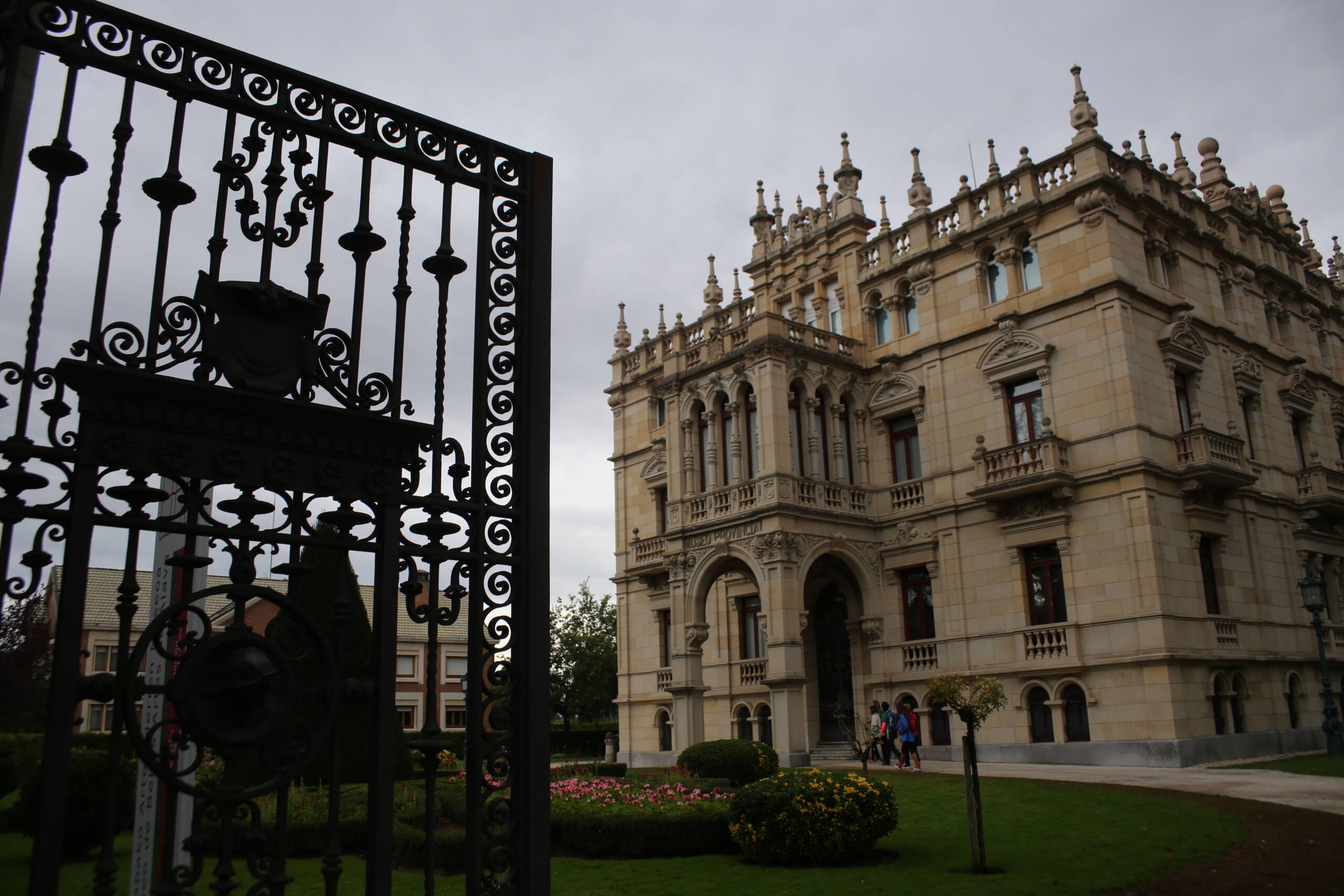There’s something endlessly captivating about arriving at the Museo de Bellas Artes de Álava in Vitoria-Gasteiz, not only because of the art it houses, but because the building itself feels like an artwork. The Palacio de Augustin-Zulueta rises behind wrought-iron gates that curl into intricate patterns, framing the sandstone façade like a theatrical prologue. You step closer and notice the palace’s details: the carved arches, the clustered columns, the balustrades that line its edges, all topped with delicate spires that make you feel like you’ve stumbled into a northern European fairy tale. Even under a moody Basque sky, the structure glows softly, its cream-colored stone a contrast to the dark, heavy clouds that seem almost painted above it.

Walking through the gardens, which are perfectly tended with flowerbeds in bloom and neat little trees, you sense that the mansion was built with more than just wealth in mind—it was built to impress, to anchor culture and elegance in the city. And today, as the Fine Arts Museum of Álava, it fulfills that purpose in a different way, inviting visitors to wander not only through history but also through creativity. Inside, the museum’s collection spans from medieval religious works to vibrant Basque art of the 19th and 20th centuries. Each gallery opens like a quiet conversation with the past, and the fact that you’re moving through old drawing rooms and halls of a grand home makes the encounter even more intimate.
Vitoria-Gasteiz itself is known as the “Green Capital,” a city of parks, bike paths, and leafy boulevards, and the museum feels like a jewel set into that calm rhythm. After a visit, it’s easy to stroll further into the city, letting the quiet charm of its old town draw you in with narrow streets, stone facades, and small cafés that serve pintxos in a style both distinct from and connected to their San Sebastián cousins. There’s no rush here—just the sense that art, history, and daily life blend naturally.
A stop at the Museo de Bellas Artes isn’t just about checking off a cultural site; it’s about pausing in front of something beautiful, inside and out. The palace reminds you that architecture can be as telling as any canvas, and Vitoria-Gasteiz offers you the chance to enjoy both in a way that feels refreshingly unhurried.
Leave a Reply